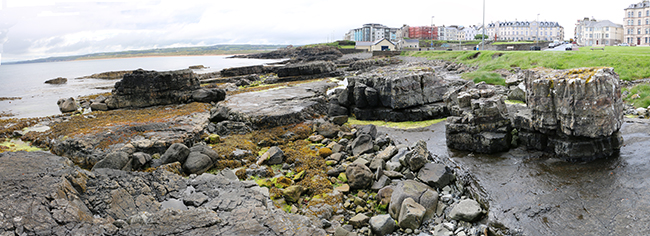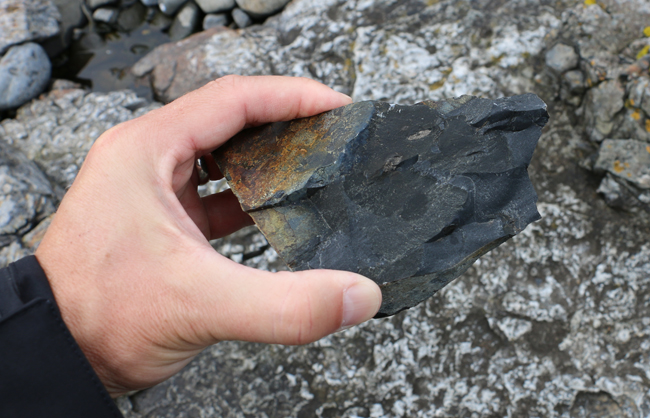One of my favorite places in Northern Ireland is the east side of the peninsula that hosts the tourist town of Portrush. There, two early schools of geological thought engaged in a battle. The opposing sides were:
- the Neptunists, who thought all stratified rocks, and in particular basalt, must form from precipitation from the sea, and
- the Plutonists, who thought some rocks, including basalt, formed through intrusion of molten rock from deep within the Earth (potentially followed by its eruption from a volcano).
The Neptunists are exemplified by Abraham Gottlob Werner, and the Plutonists were represented by James Hutton. So why did these titans clash in Portrush, of all places?
This is a spot where ammonite fossils are found in dark-colored, hard, stratified rocks. The Neptunists said, “Aha! Here are sea creatures fossilized in basalt! Therefore basalt must be a rock precipitated by the oceans!” But then Hutton showed up and demonstrated that in fact the rock had been misidentified. The “basalt” was actually hornfels, a contact-metamorphosed mudrock. The strata in question were of the Lias, a latest Triassic / earliest Jurassic unit in British stratigraphy. The Liassic shale became Liassic hornfels when it was baked by the heat of a nearby gabbroic intrusion, the ~60 Ma Portrush Sill. So there is mafic igneous rock here, but it’s gabbro, not basalt. And Portrush therefore proves the Plutonists’ case, not the Neptunists’.
A diagram from an interpretive sign at the site:
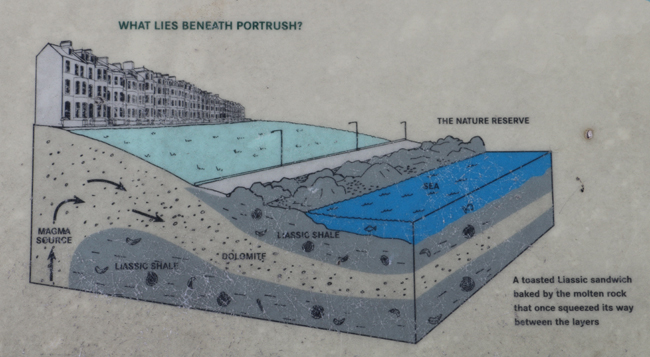 (Note the error on the sign where they substitute “dolomite” for what surely was intended to be “dolerite,” another name common in the U.K., for what U.S. geologists might call “diabase.” In my opinion, the sill is coarse enough to qualify as gabbro. So I’m sticking with that.)
(Note the error on the sign where they substitute “dolomite” for what surely was intended to be “dolerite,” another name common in the U.K., for what U.S. geologists might call “diabase.” In my opinion, the sill is coarse enough to qualify as gabbro. So I’m sticking with that.)
Let’s dig in. Here’s a Google Map of the place, showing that something odd must be up with the geology in order to have such a profound promontory on what’s otherwise a relatively smooth coast.
The Portrush outcrops look like this:
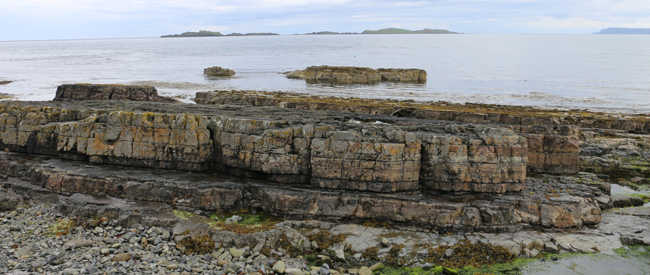
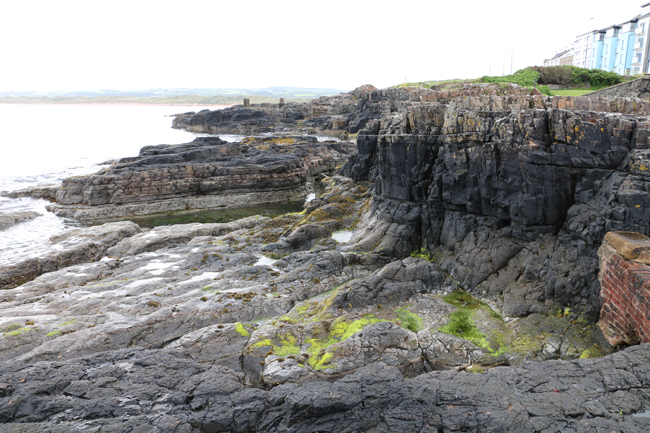
Interesting intrusive structures along the contact zone between the Lias and the gabbro:
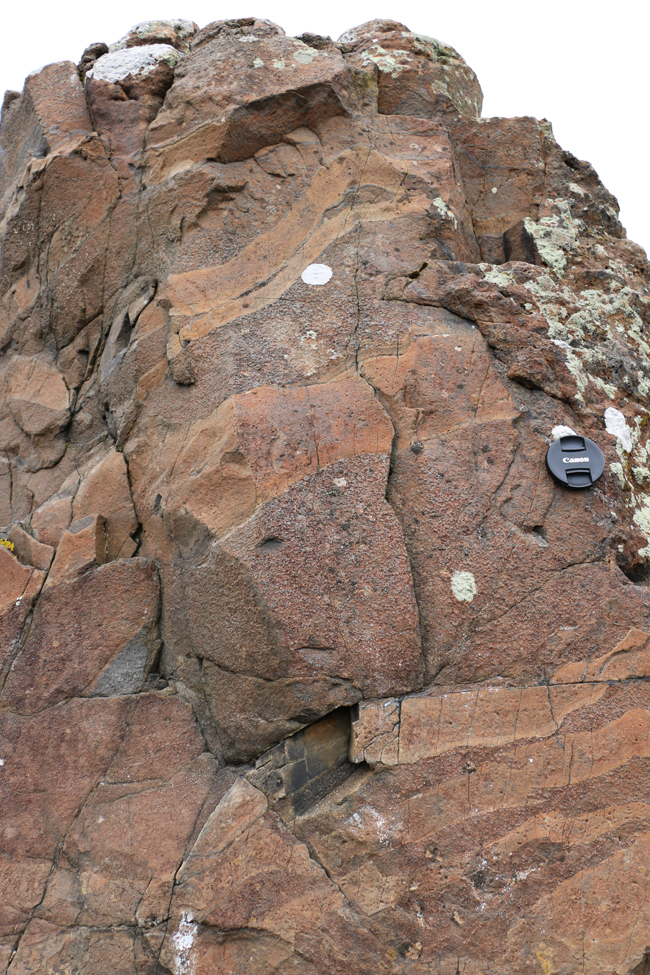
My field assistant examples samples of the different rock types on the rocky beach…
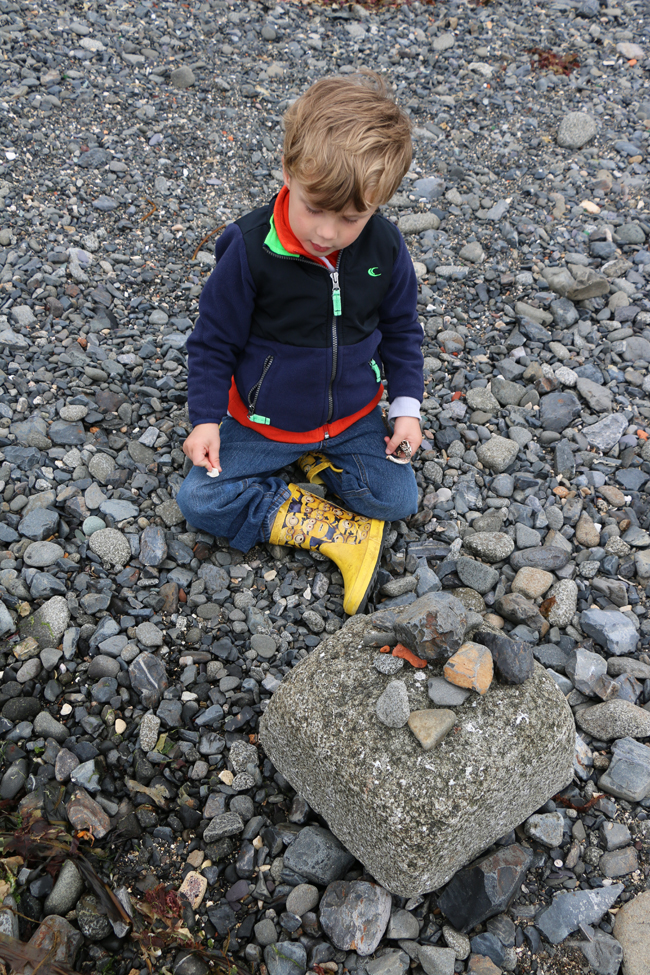
…the sandy beach…
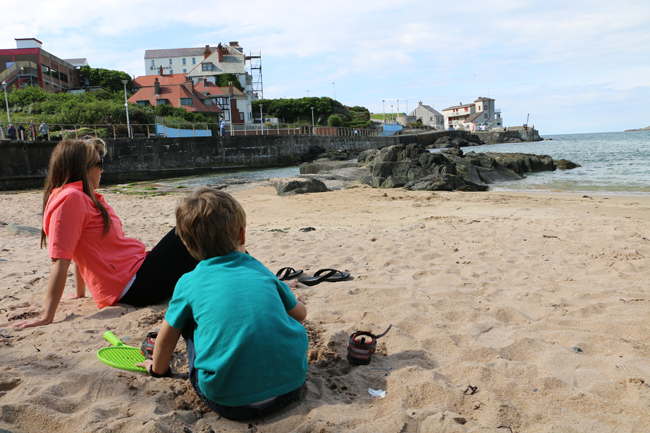
…and on the outcrop:
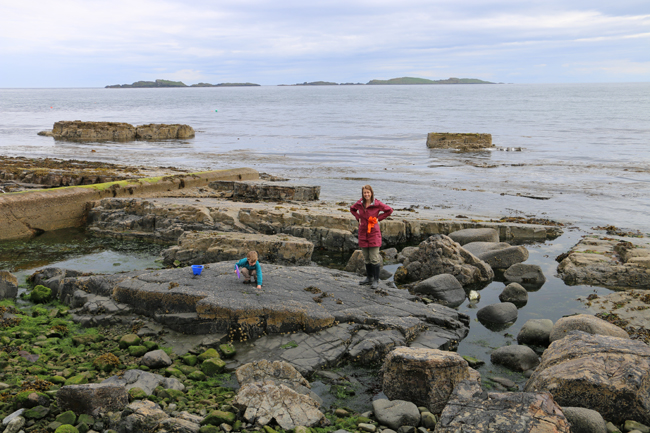
Here’s what we find in terms of the two main lithologies:

Hornfels:
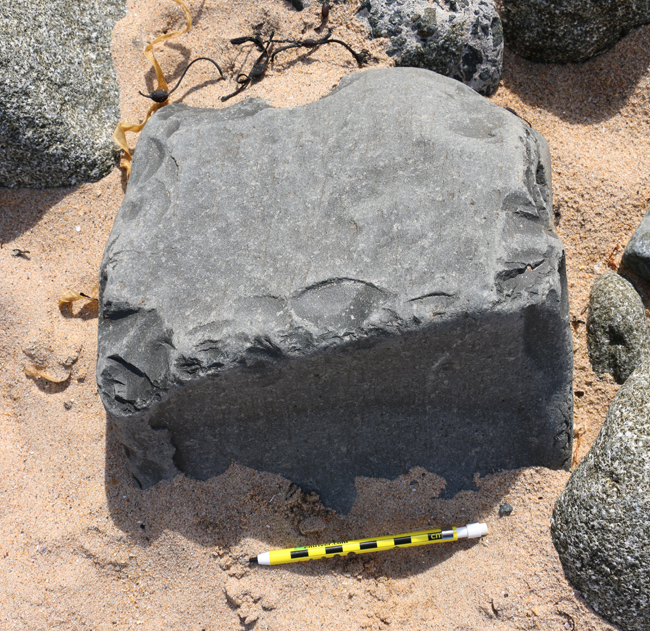
Gabbro:
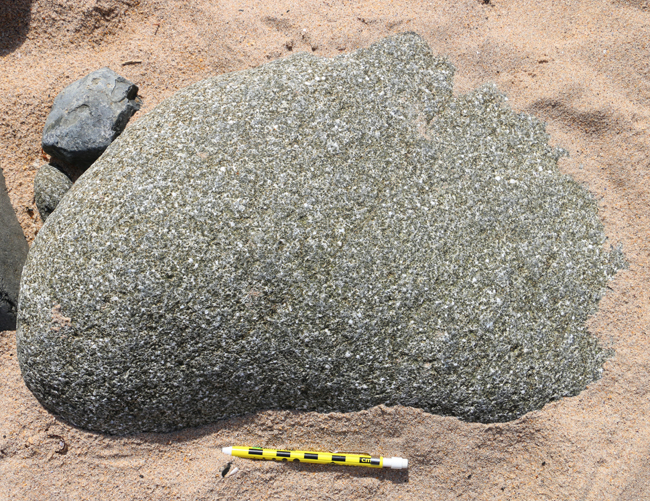
You kind of can’t blame the pre-petrographic-microscope Neptunists for mistaking the hornfels for basalt. It’s fine-grained and black and there’s a lot of basalt in this corner of Ireland. It’s reasonable for that to be their initial take.
Hornfels sample on gabbro background:
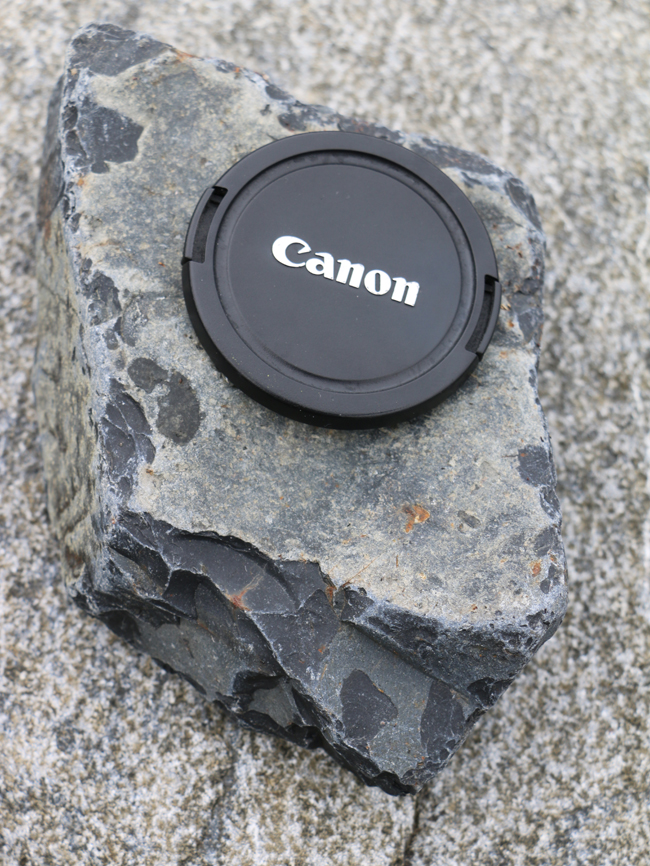
Here’s another sample that I felt looked a lot like a basalt:

Now for the ammonites:
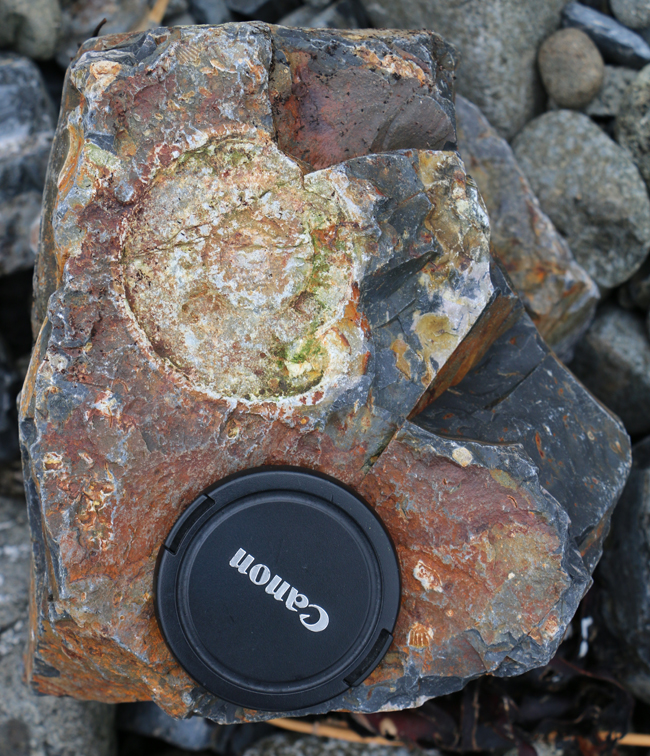


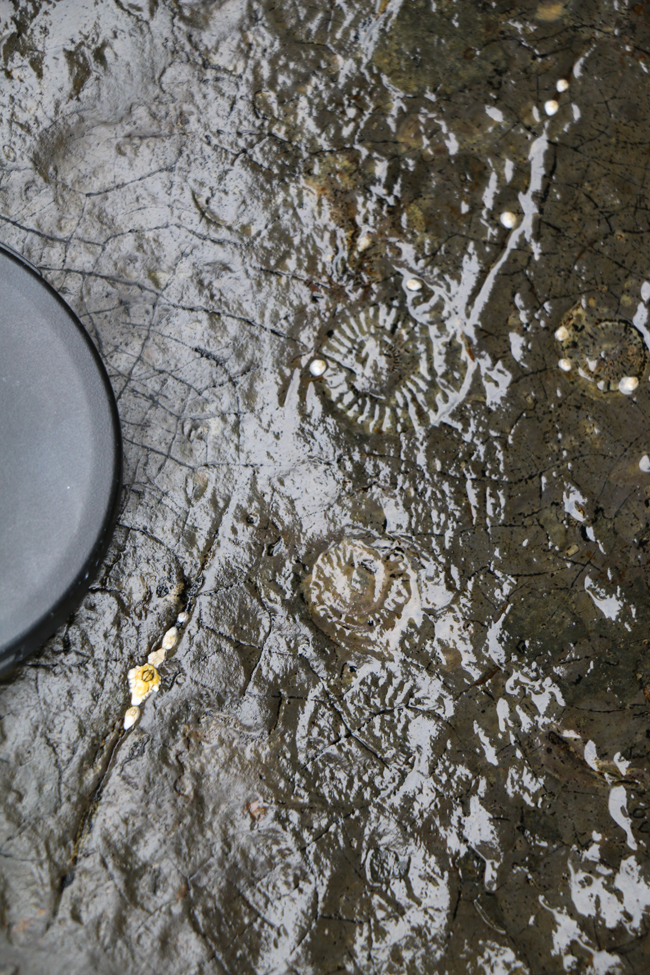
Here is a gallery of 17 more specimens of ammonites from the outcrops of Portrush. Click through to see them all:
My favorite ammonite fossil is this big one, decorated as it is with modern barnacles:
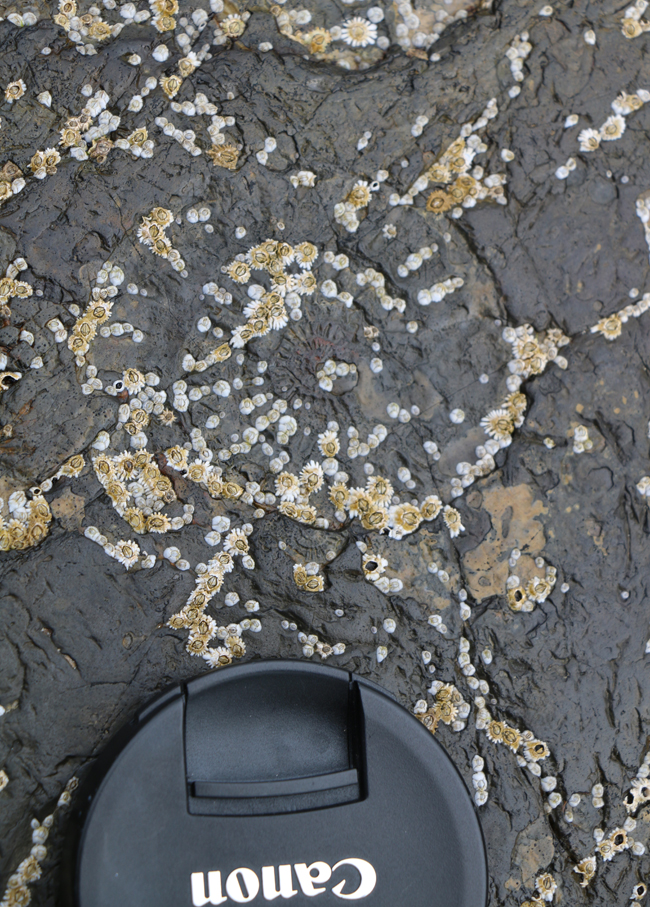
Portrush is proud of its geologic heritage, and the lovely spiral forms of ammonites decorate many municipal structures:
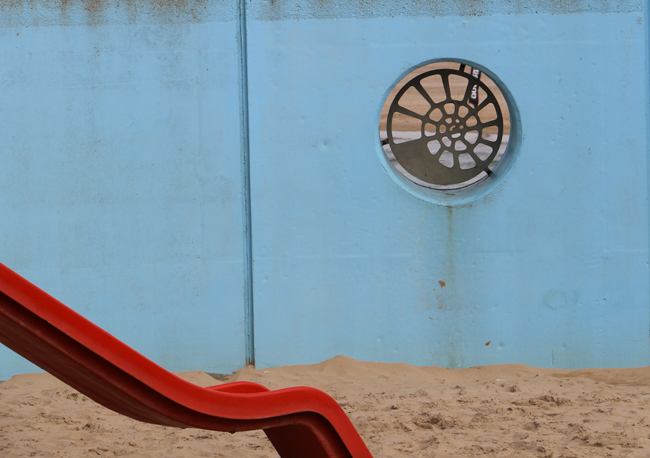
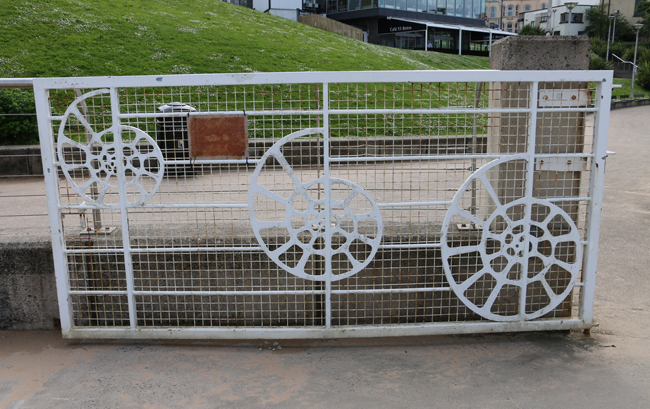
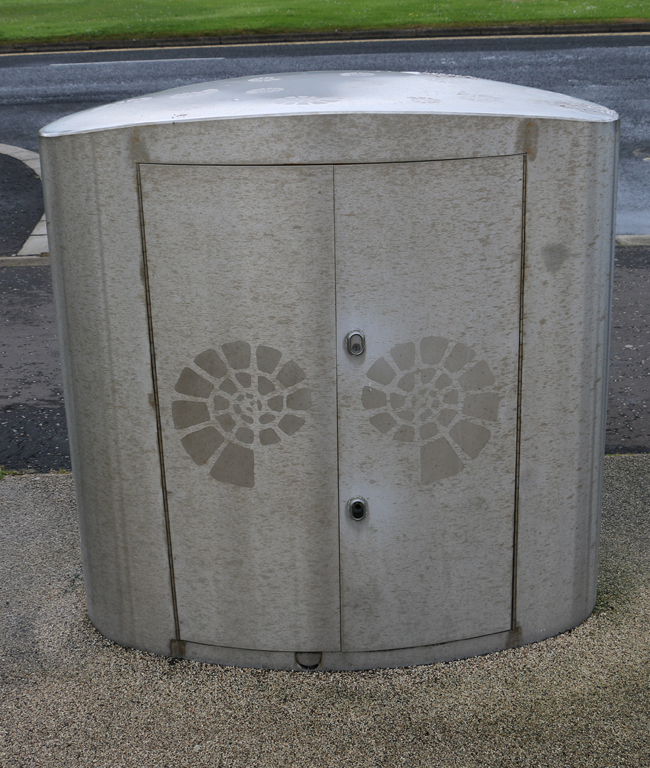
This isn’t an ammonite, but it might be Aviculopecten or another bivalve:

Here are the GigaPans that I made of the site.
Overviews of the baked Liassic outcrops:
Link GigaPan by Callan Bentley
Link GigaPan by Callan Bentley
Link GigaPan by Callan Bentley
Link GigaPan by Callan Bentley
Link GigaPan by Callan Bentley
This one looks particularly basaltic:
Link GigaPan by Callan Bentley
The gabbroic intrusion:
Link GigaPan by Callan Bentley
Link GigaPan by Callan Bentley
Link GigaPan by Callan Bentley
Link GIGAmacro by Robin Rohrback & Callan Bentley
The fossils:
Link GigaPan by Callan Bentley
Link GigaPan by Callan Bentley
Link GigaPan by Callan Bentley
Here’s a close look at a similar ammonite fossil in another shale, close-up.
Link GIGAmacro by Robin Rohrback
Lastly, here’s some sand from the beach nearby. It’s dominated by shells, not by either of the rock types discussed above:
Link GIGAmacro by Robin Rohrback

